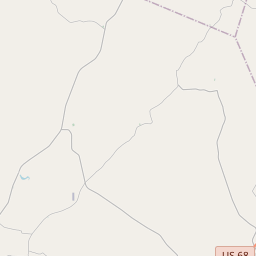A Civil War Defense Line
Historical marker location:






Troops under Generals S. B. Buckner and A. S. Johnston, CSA, took up this key position in the Southern defense line on September 18, 1861. After Fort Henry fell and Fort Donelson was threatened, they evacuated Feb. 11-13, 1862. Gen. O. M. Mitchell and Federal troops entered Feb. 14, 1862, occupying the evacuated fort and securing the defense line for the North.
Erected in 1962
April 12, 1861: The Civil War begins with the Confederate attack on Fort Sumter, located in South Carolina's Charleston Harbor.
April 15, 1861: President Abraham Lincoln issues a call for 75,000 volunteers to serve in the Union Army to suppress the rebellion.
May 24, 1861: The first major land battle, known as the First Battle of Bull Run (or First Battle of Manassas), takes place in Virginia. It ends in Confederate victory.
September 17, 1862: The Battle of Antietam in Maryland becomes the bloodiest single-day battle in American history, with heavy casualties on both sides. The Union forces, commanded by General George McClellan, manage to halt Confederate General Robert E. Lee's advance into Union territory.
January 1, 1863: President Lincoln issues the Emancipation Proclamation, declaring that all slaves in Confederate-held territories are to be set free. However, the proclamation does not immediately free all slaves in the United States.
July 1-3, 1863: The Battle of Gettysburg in Pennsylvania takes place, resulting in a significant Union victory and inflicting heavy casualties on Confederate forces. It marks a turning point in the war.
November 19, 1863: President Lincoln delivers the Gettysburg Address, emphasizing the principles of liberty, equality, and the preservation of the Union.
April 9, 1865: General Robert E. Lee surrenders to Union General Ulysses S. Grant at Appomattox Court House in Virginia, effectively ending the Civil War.
April 14, 1865: President Lincoln is assassinated by John Wilkes Booth while attending a play at Ford's Theatre in Washington, D.C.
May 10, 1865: Confederate President Jefferson Davis is captured, signaling the collapse of the Confederate government.
December 6, 1865: The Thirteenth Amendment to the United States Constitution is ratified, officially abolishing slavery throughout the country.
While this timeline provides an overview of key events, it is important to note that the Civil War spanned over four years, from 1861 to 1865, and encompassed numerous battles, campaigns, and political developments that shaped the course of American history.
The famous horse race, the Kentucky Derby, has been held annually at Churchill Downs in Louisville since 1875.
In the late 18th century, European settlers began to establish permanent communities in the area. In 1796, Warren County was officially formed and named after General Joseph Warren, a Revolutionary War hero. Throughout the early 19th century, the county's economy thrived due to agriculture, primarily tobacco and hemp production. The growth of transportation systems, such as riverboats and railways, contributed to the county's economic prosperity.
During the American Civil War, Warren County played a significant role as it was strategically located between the Union and Confederate forces. Bowling Green, the county seat, was occupied by both Union and Confederate troops at different times during the war. The county suffered economic hardships and destruction as a result of the conflict.
After the Civil War, Warren County entered an era of rapid industrialization and modernization. The arrival of the railroad in the late 19th century opened new opportunities for trade and commerce. The county became a hub for tobacco processing, manufacturing, and trade, attracting new businesses and residents.
Today, Warren County continues to grow and thrive. It is home to Bowling Green, the third-largest city in Kentucky, and has a diversified economy that includes manufacturing, healthcare, higher education, and tourism. The county also hosts popular attractions such as the National Corvette Museum and Mammoth Cave National Park, drawing visitors from all over the country. Warren County's vibrant history is still celebrated and preserved through various museums, historic sites, and local traditions.
Warren County Timeline
This timeline provides a glimpse into the major events and milestones that have shaped the history of Warren County, Kentucky.
- 1796 - Warren County is officially established as part of the Commonwealth of Kentucky.
- 1810 - The county seat is relocated from Bowling Green to a more central location.
- 1861 - The American Civil War begins, and Warren County becomes a strategic location due to its position on the Confederacy's western frontier.
- 1864 - The Battle of Perryville takes place in Warren County, resulting in a Confederate victory.
- 1870 - The Louisville and Nashville Railroad is completed, bringing increased economic development to Warren County.
- 1906 - Western Kentucky State Normal School, now known as Western Kentucky University, is established in Bowling Green.
- 1960s - The construction of Interstate 65 and the Cumberland Parkway boosts transportation and tourism in Warren County.
- 1997 - The National Corvette Museum opens in Bowling Green, celebrating the city's history as the manufacturing hub of Chevrolet's Corvette.